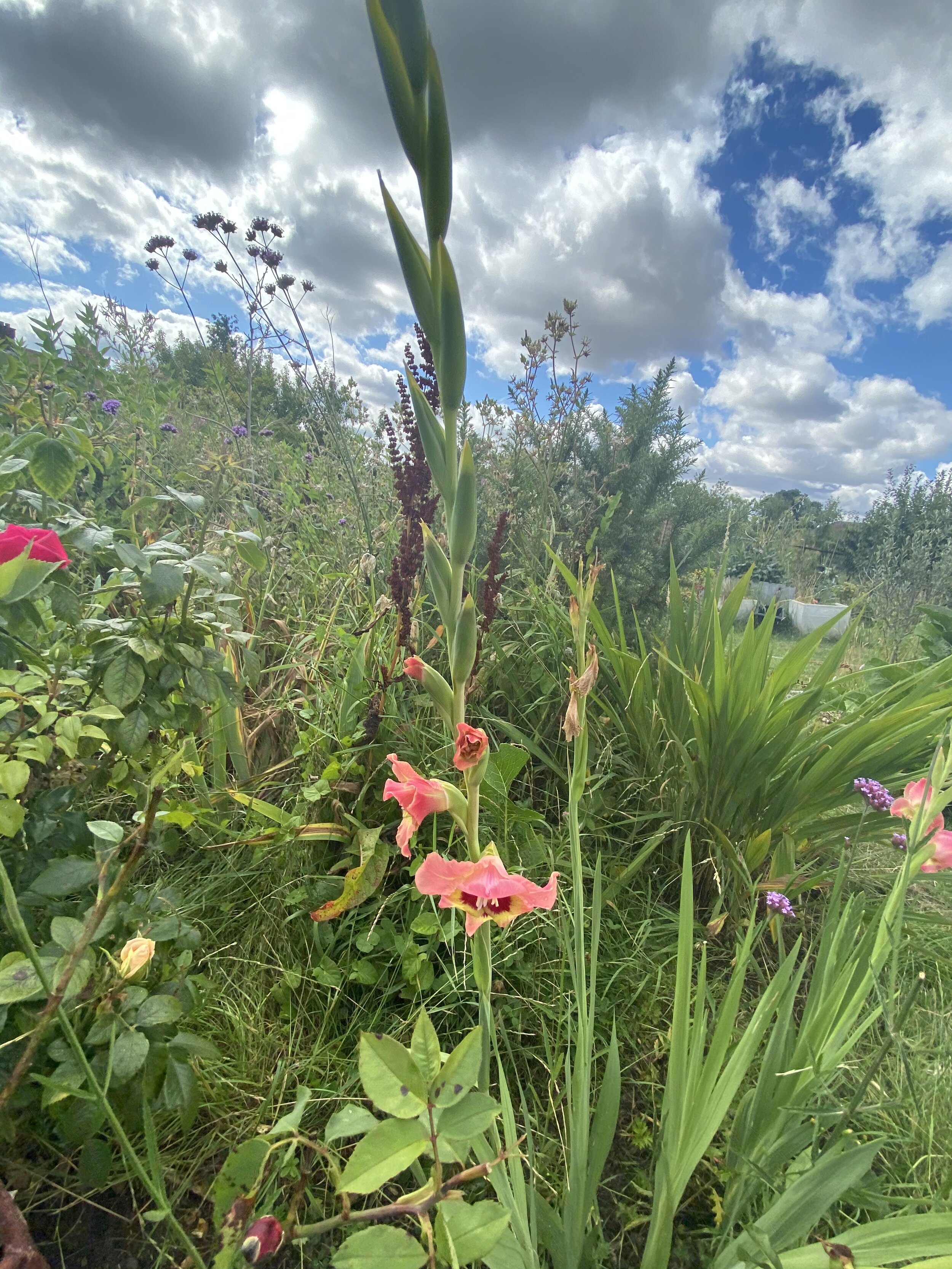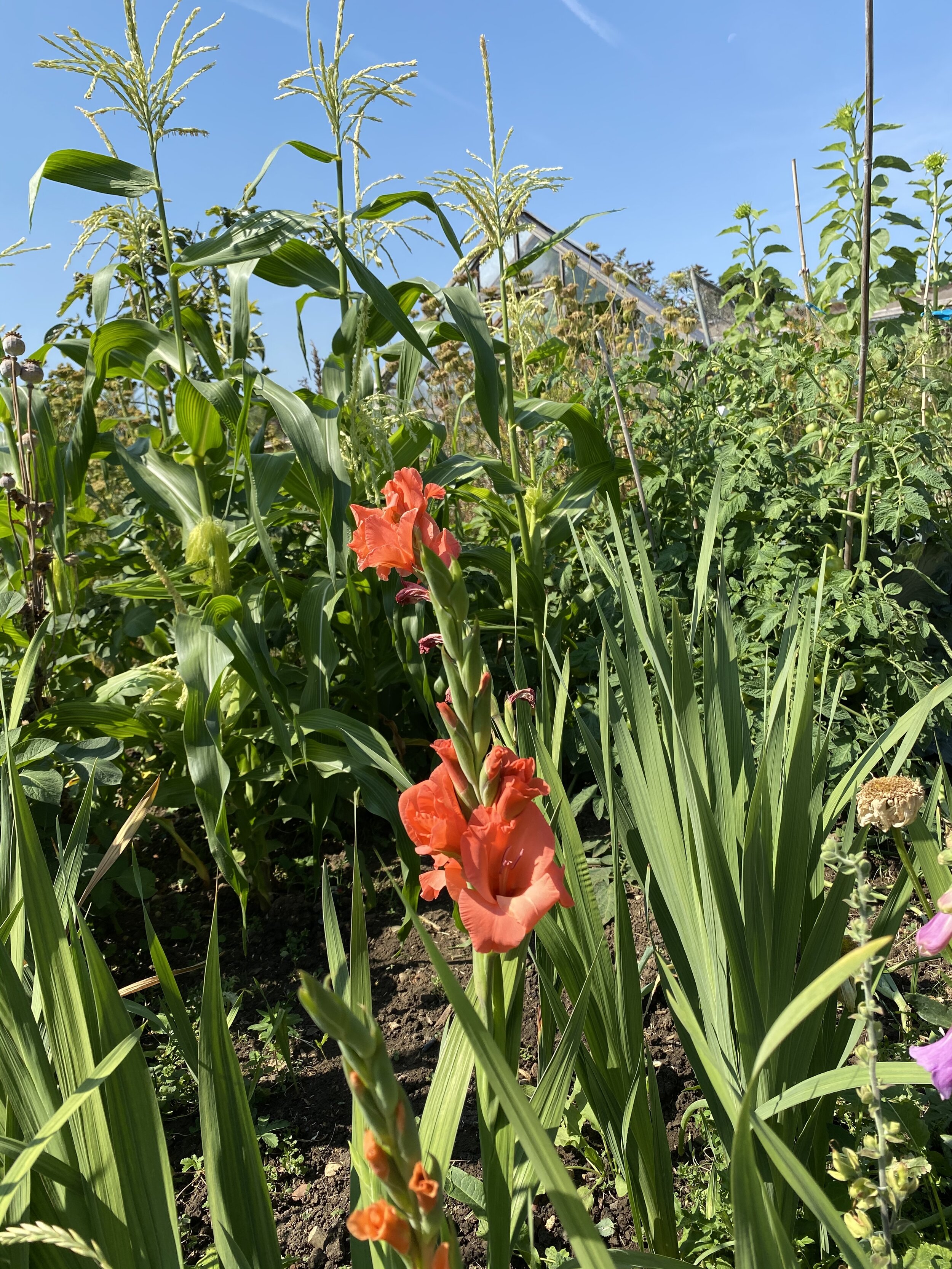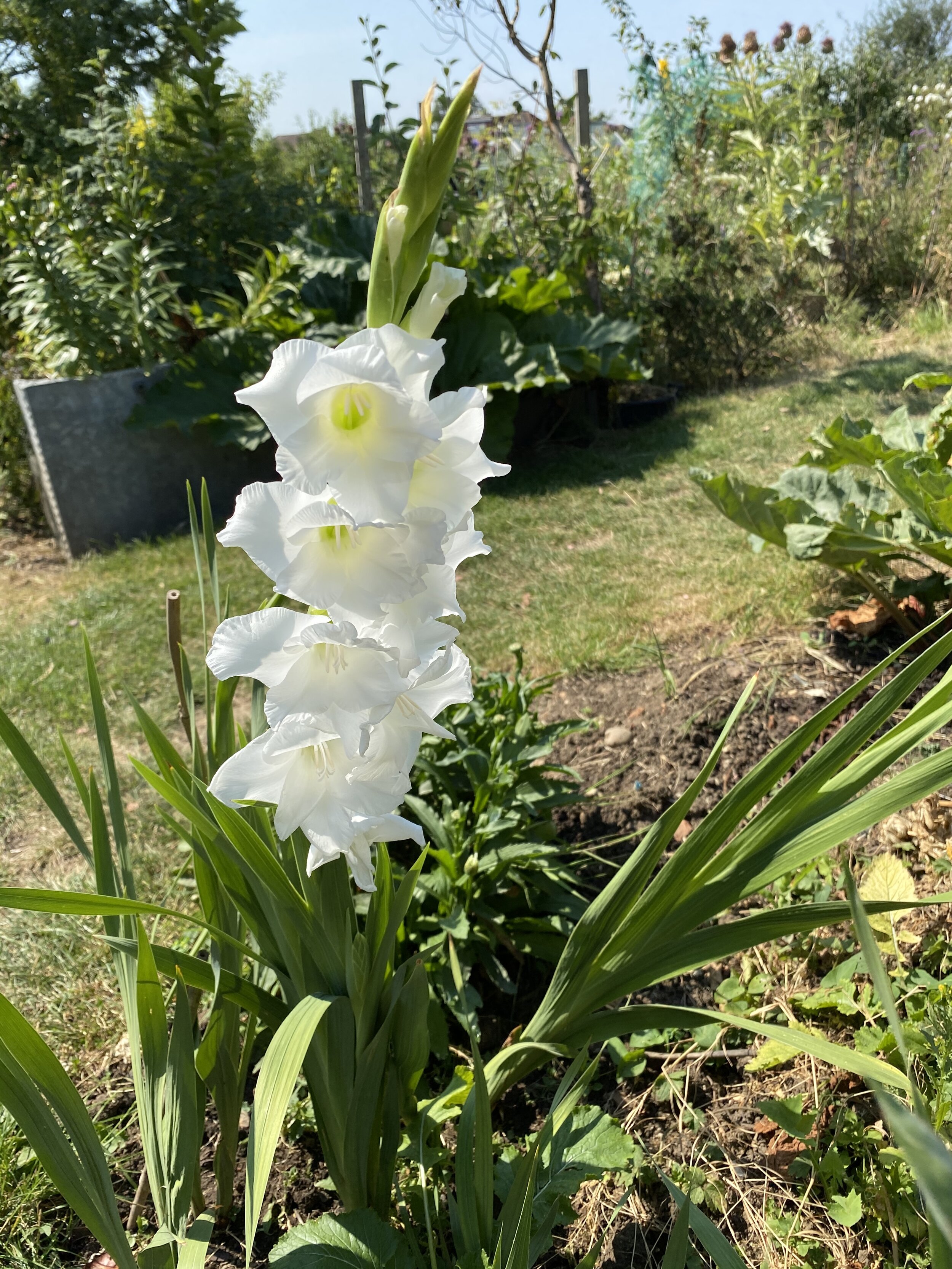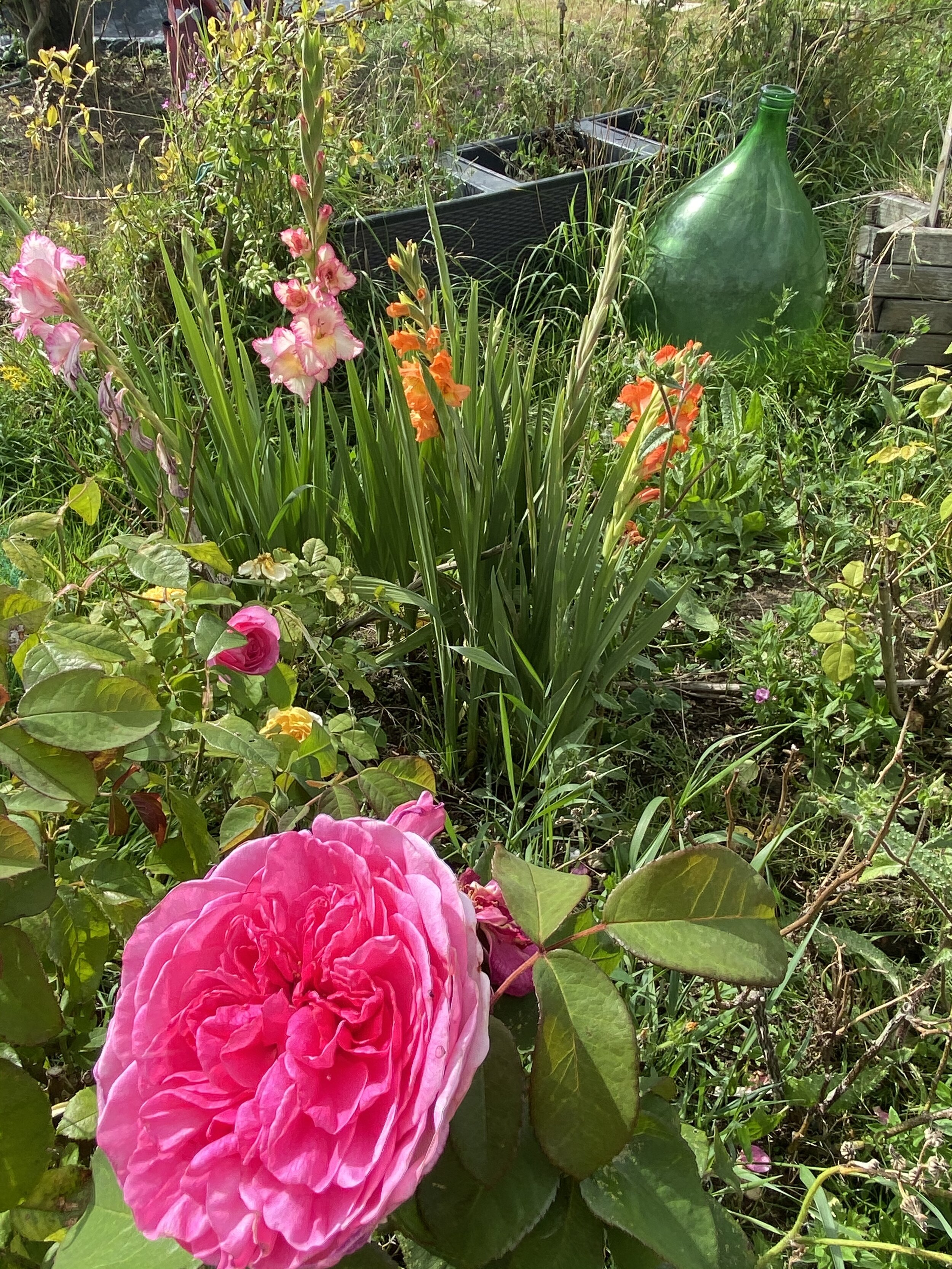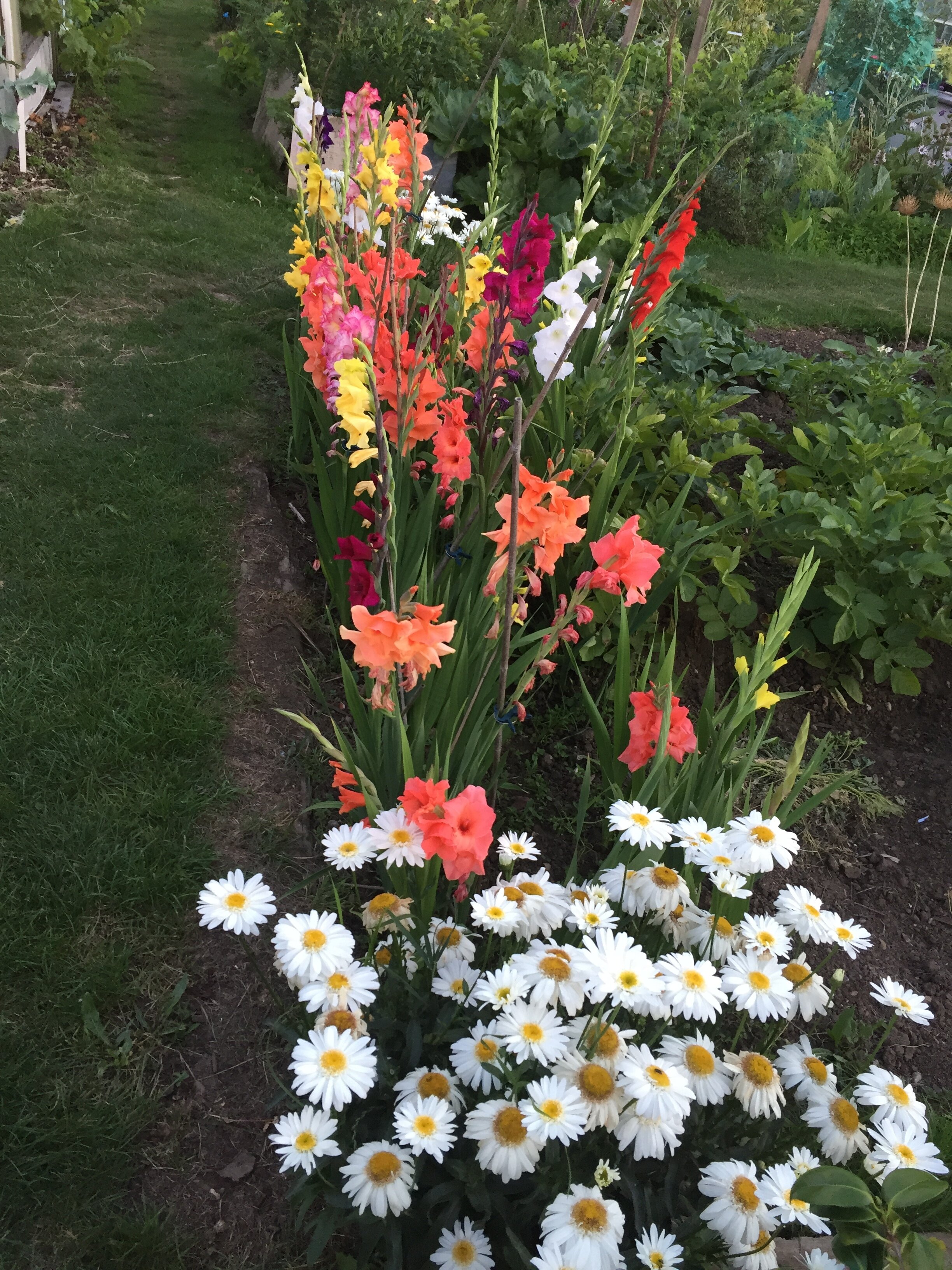August is the time for gladiolas!
One of my favourite times of the English summer arrives in mid July and continues throughout August — the gladiola season. I really do look forward to this glorious, riotously colourful period on my plots. Depending on the variety, gladiola heights vary between 60cm and 150cm. Bloom size varies too, from 5cm in diameter, to a ‘giant’ 7cm!
Oh, the colours!
My glorious gladiolas, summer 2019 …
The build up can be quite something too. Gladioli are also known as ‘Sword Lilies’ owing to the shape of their leaves. I feel a sense of relief and anticipation when the sword-like leaves begin to emerge from their plump corms in late spring, and slowly lengthen and bulk up over subsequent weeks, culminating in the production of a single spear bearing a florescence of showy, shallowly-trumpeted flowers. Some are even scented!
Gladiola, Gladioli, Sword Lily. There is one more name, the scientific one — Gladiolus, Latin for ‘little sword’. Gladiolus is a genus of perennial cormous flowering plants within the Iris family. The vast majority of the over 300 species of Gladiolus known are native to central and southern Africa. Since the first South African introductions to Britain in the mid-eighteenth century, breeders have produced numerous hybrids and varieties offering a greater choice of colours and colour combinations, scent, and disease resistance.
Gladiolus grow well in lighter, moist but well-drained or well-drained soil in full sun. A sheltered spot is best, particularly when the florescent spike is fully flowered. Staking or other support may be necessary for taller varieties.
In cold, wet regions, gladiola corms will need to be dug up once the foliage has faded and stored in a dark, frost-free place for the autumn and winter. I live in London and find that my gladioli come back each year after spending the winter in the ground, with a mulch of hay or garden cuttings for protection, provided that the ground does not become waterlogged. If you do dig your corms up for the winter, they can be replanted in the spring for another great summer show that same year.
I used to spend a fair amount of money on cut flowers, especially gladiolas and roses, until I began to grow my own. Nowadays, I derive exquisite pleasure from looking at my flowers - alive - on live plants in their natural environment, going through their natural cycle, as opposed to cut and displayed in a vase at home. Strangely enough, I don’t bring ANY cut flowers, whether grown by me or otherwise, home at all anymore. My vases actually have years-old (I’m talking well over 15 years old) artificial flowers in them (who’d think?)! Hey, I’m not knocking floral displays in vases. They can be amazing. I just prefer to appreciate them in situ, alive.
Seasonal flowers have long been appreciated by many cultures, used as food, medicaments, decoration, gifts or in religious and other ceremonies. It is believed that the Romans celebrated birth and birthdays using flowers. These practices may well have contributed to the development of the tradition of birth flowers in some countries today.
In the early 18th century, one Lady Mary Wortley Montague wrote about ‘the language of flowers’, which introduced the concept of associating flowers with a person’s month or time of birth to England. Lady Montague was the wife of the English Ambassador to the Ottoman Empire. While there, she explored the ottoman culture and was a lady of letters. The Ottomans had a long history of the consumption and marketing of flowers. Their native Tulipa (tulip) comes to mind. They were quite advanced for the time, developing a body similar to a modern-day accreditation institution, which played a role in generating standards, brands and norms for the flower market.
Today, the birth month flowers recognised and promoted by floristry industries the world over differ from country to country. Factors such as historical associations with native species of flowers and availability (whether locally-grown or imported) seem to play a role in each country’s selection.
Looking at the UK and USA, there is one flower that represents the month of August on both sides of the Atlantic — the Gladiolus. I was born in August. Could that have something to do with why I am so besotted with the Gladiolus plant and it’s beautiful blooms?
Gladiolus, my August flower, is symbolic of ‘a heart pierced with love’. It symbolises honesty, remembrance, integrity, calm and strength of personality. represents remembrance, calm and infatuation. I’ll take it all! Infatuation — with plants — I readily own that. I have to admit that I have a way to go with regards to ‘calm’ though … ; )
The arrival of gladiolus flowers confirms to me that summer is well and truly in full swing. They make me smile. After mid August, I will admit that a hint of dread that summer will soon be over begins to creep in. I often find myself checking my rows and clumps of gladiola plants, looking to see if there any new flower spears forming, giving me hope that the joy will continue for a little while longer, at least … I shouldn’t do this really. It just feeds my anxiety and detracts from what I know is the more beneficial thing to do for my soul, that is:




